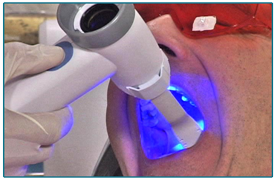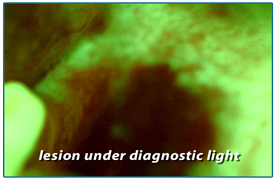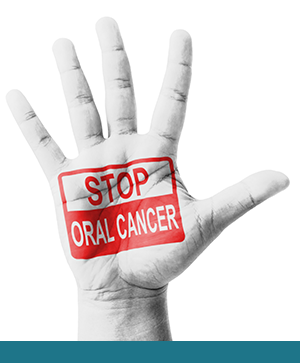The Signs of Oral Cancer
Did you know almost 42,000 Americans will be diagnosed with oral and throat cancers this year? And that the 5-year survival rate of those diagnosed is only slightly more than 64 percent? When cancer is detected and treated early, treatment-related health problems are reduced.
We perform a thorough oral cancer exam during your checkups because early detection can save your life.
Oral cancer is the uncontrolled growth of abnormal cells in the mouth and throat. Some of the warning signs are—
- a red, white, or discolored patch or lump in or around your mouth.
- a sore that bleeds easily or that doesn’t heal within 2 weeks.
- an area that has thickened, raised, or become hardened.
- a rough patch of tissue.
- difficulty chewing or swallowing.
- a chronic sore throat or hoarseness.
The exam for oral cancer
Because early detection is vital to surviving oral cancer, we will perform a thorough oral cancer screening each time we see you in our office for an exam. In addition, if you notice any of the warning signs, tell us right away. Do not ignore one or more of the signs just because it does not hurt. Most pre-cancerous and cancerous lesions are completely painless.
As part of our oral cancer exam, we can offer comfortable, non-invasive technologies for detecting cancer in its earliest stages. There can be two steps in oral cancer detection: screening and biopsy.
Screening for oral cancer
 First we use a cancer screening technology to help us find and identify suspicious tissues, especially the ones that cannot be seen easily with the naked eye.
First we use a cancer screening technology to help us find and identify suspicious tissues, especially the ones that cannot be seen easily with the naked eye.
The technology combines a specifically formulated mouthrinse with a special light.
We use a concentrated light that identifies abnormal areas. Under the light, abnormal or suspicious tissues appear white in contrast with the surrounding healthy tissue. If we find any suspicious sores or lesions, we may then use an in-office biopsy system to determine if the area is pre-cancerous  or cancerous.
or cancerous.
Performing a biopsy for oral cancer
We press a small brush firmly against the area and rotate it gently to collect a sample of cells.
The sample is spread onto a glass slide and sent to the laboratory for examination. At the lab, a computer analyzes the cell sample. A pathologist then evaluates the sample and provides a diagnosis.
If cancerous or potentially cancerous cells are found, we talk with you about any additional testing that may be needed.
Early detection is vital to successful treatment for oral cancer. That is why we offer these technologies for keeping you and your mouth healthy.

